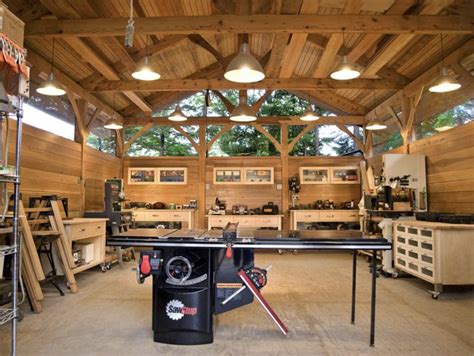Discover essential woodworking tips for choosing wood, using tools, designing, measuring, cutting, joinery, assembling, sanding, applying finishes, and prioritizing safety practices. Master your woodworking skills today!
Choosing the Right Type of Wood
When embarking on a woodworking project, one of the most important decisions you’ll make is choosing the right type of wood. The type of wood you choose will influence the overall appearance, durability, and workability of your project. Before making a selection, it’s essential to consider the characteristics and properties of different types of wood.
Hardwoods such as oak, maple, and cherry are known for their strength and durability, making them ideal for furniture and cabinets. On the other hand, softwoods like pine and cedar are lightweight and easy to work with, making them a popular choice for decorative items and outdoor projects. Each type of wood has its own unique grain patterns and colors, so it’s important to consider the aesthetic appeal of the wood as well.
Additionally, it’s crucial to take into account the intended use of the project and the environmental factors it will be exposed to. For outdoor projects, rot-resistant woods like teak and cedar are recommended, while for indoor furniture, hardwoods with a smooth, appealing finish are desirable. By carefully considering these factors, you can ensure that you’re choosing the right type of wood for your woodworking project.
Understanding Essential Woodworking Tools
Woodworking is a craft that requires the use of various tools to create beautiful and functional pieces. Whether you are a beginner or an experienced woodworker, understanding the essential woodworking tools is crucial for the success of your projects. From measuring and marking tools to cutting and shaping tools, having the right equipment will make your woodworking experience more enjoyable and your projects more precise.
One of the most important tools in woodworking is the table saw, which is used for ripping, crosscutting, and beveling wood. It is essential for creating straight and precise cuts, making it a must-have for any woodworking workshop. Another essential tool is the miter saw, which is used for making accurate crosscuts and miter cuts. This tool is especially useful for framing, molding, and other fine woodworking projects.
Other essential woodworking tools include the router, which is used for cutting, shaping, and hollowing out areas in wood. Hand tools such as chisels and hand planes are also crucial for shaping, smoothing, and detailing wood surfaces. By understanding the purpose and use of these essential woodworking tools, you can enhance your skills and create your own woodworking masterpiece from scratch.
Designing Your Woodworking Project
When it comes to designing your woodworking project, the first step is to have a clear vision of what you want to create. Whether it’s a piece of furniture, a decorative item, or anything else, having a clear idea of the final product will guide your design process. Consider the size, shape, and function of the project, as well as any specific details or features you want to incorporate.
Next, it’s important to create a detailed plan or blueprint for your project. This could involve sketching out the design on paper or using design software to create digital drawings. A well-thought-out plan will help you visualize the project, make necessary adjustments, and ensure that you have all the measurements and specifications needed for the construction phase.
Finally, take the time to consider the materials you will use for the project. The type of wood, as well as any additional materials such as hardware or finishes, will have a significant impact on the final look and function of your project. Keep in mind factors such as durability, aesthetics, and cost when making your material selections.
Measuring and Cutting Wood with Precision
Accurate measuring and cutting are essential skills for any woodworking project. It’s important to ensure that your measurements are precise and your cuts are clean to achieve a professional-looking result. One of the most important tools for accurate measuring is a reliable tape measure or ruler. Make sure to measure twice and cut once to avoid any mistakes. When it comes to cutting wood, using a sharp and well-maintained saw is crucial for achieving clean and accurate cuts.
Another key aspect of cutting wood with precision is using the right cutting techniques. Whether you’re using a handsaw, circular saw, or table saw, it’s important to practice proper cutting techniques to achieve straight and accurate cuts. Always make sure to follow the manufacturer’s instructions and safety guidelines when using power tools to cut wood.
When making precise cuts, it’s also important to mark your measurements clearly on the wood using a pencil or marking tool. This will help you stay on track and ensure that your cuts are aligned with your measurements. Taking the time to measure and cut wood accurately will ultimately save you time and frustration in the long run, and will result in a high-quality finished product.
Joinery Techniques: Creating Strong Connections
Joinery techniques are essential for creating strong and durable woodworking projects. Whether you are building furniture, cabinets, or other woodworking pieces, the way you join the wood together can make a significant impact on the overall strength and longevity of your masterpiece.
One of the most common joinery techniques is the use of dovetail joints. Dovetails are known for their strength and aesthetic appeal, making them a popular choice for many woodworking projects. By carefully cutting and fitting the interlocking tails and pins, dovetail joints create a strong connection that can withstand the test of time.
Another popular joinery technique is the use of mortise and tenon joints. This method involves cutting a square or rectangular hole (mortise) in one piece of wood and creating a matching projection (tenon) on the other piece. When the tenon is inserted into the mortise and secured with glue or dowels, it creates a strong and durable connection that is commonly used in furniture making and cabinetry.
Assembling and Sanding Your Masterpiece
Assembling and Sanding Your Masterpiece
Assembling and sanding are crucial steps in the woodworking process that can make or break the final outcome of your project. Assembling involves fitting all the pieces of your project together to create a sturdy and cohesive structure. Whether you’re building a table, chair, or cabinet, the assembly stage requires careful attention to detail and precision to ensure that all the parts fit together seamlessly.
Once your project is assembled, it’s time to move on to the sanding stage, where you will smooth out any rough edges and create a polished finish. Sanding is not only important for aesthetic purposes, but it also plays a crucial role in ensuring the structural integrity and longevity of your woodworking project. Proper sanding can remove any imperfections, smooth out surfaces, and prepare the wood for the application of finishes.
When assembling and sanding your masterpiece, it’s important to use the right tools and techniques to achieve a professional and high-quality result. Paying attention to detail during these stages will ensure that your woodworking project is not only visually appealing but also durable and long-lasting.
Applying Finishes to Enhance Natural Beauty
When it comes to woodworking, applying the right finishes can truly make your creation stand out. Whether you’re working with oak, cherry, pine, or any other type of wood, the finish you choose will have a significant impact on the overall appearance of your masterpiece. By enhancing the natural beauty of the wood, you can bring out the intricate grain patterns and rich colors, creating a stunning visual appeal.
There are several options for finishes, including stains, oils, and varnishes, each offering unique benefits. Stains can add depth and richness to the wood, while oils penetrate the grain, highlighting its natural texture. Varnishes provide a protective layer that not only adds shine but also helps to shield the wood from wear and tear.
When applying finishes, it’s crucial to follow the proper techniques to achieve the desired results. Whether you prefer a glossy or matte finish, taking the time to sand and prepare the wood surface beforehand will ensure that the finish goes on smoothly and evenly. By carefully applying multiple coats and allowing adequate drying time between each layer, you can achieve a professional-grade finish that will truly enhance the natural beauty of the wood.
Mastering Woodworking Safety Practices
When it comes to woodworking, safety should always be the top priority. Whether you’re a beginner or an experienced woodworker, it’s essential to prioritize safety practices in the workshop. One of the essential safety practices is wearing appropriate protective gear such as safety glasses, hearing protection, and a dust mask. These items will help protect you from potential hazards such as wood chips, loud machinery noise, and sawdust.
Another important safety practice in woodworking is maintaining a clean and organized workspace. Keeping your work area free of clutter can help prevent accidents and injuries. Make sure to keep your tools properly stored when not in use and clean up any wood shavings or debris on the floor. Additionally, it’s crucial to have proper lighting in your workshop to avoid any potential hazards due to poor visibility.
Furthermore, being aware of your surroundings and using power tools safely is crucial for woodworking safety. Always follow the manufacturer’s guidelines for operating power tools, and never remove safety features or guards from the machinery. It’s also important to have a clear understanding of how each tool works before using it. Lastly, always unplug power tools when changing blades or making adjustments to prevent accidental starts.
Frequently Asked Questions
What are the essential tools needed for a woodworking workshop?
Some essential tools for a woodworking workshop include a table saw, band saw, drill press, and a variety of hand tools such as chisels, planes, and saws.
What are the safety precautions to consider when working in a woodworking workshop?
Safety precautions in a woodworking workshop include wearing protective gear such as goggles and ear protection, using push sticks and featherboards when operating power tools, and keeping the workspace clean and organized.
How can someone start building their own woodworking masterpiece from scratch?
To start building a woodworking masterpiece from scratch, one should begin by selecting the right type of wood, creating a detailed plan or design, and then taking the time to carefully measure and cut the wood to fit the design.
What are some beginner-friendly woodworking projects to start with?
Some beginner-friendly woodworking projects include building a simple bookshelf, a picture frame, a cutting board, or a basic coffee table.
What are some tips for designing a woodworking masterpiece?
When designing a woodworking masterpiece, it’s important to consider the function of the piece, use high-quality materials, and pay attention to details such as joinery and finishing techniques.
What are the benefits of building your own woodworking masterpiece from scratch?
The benefits of building your own woodworking masterpiece from scratch include the satisfaction of creating something with your own hands, the opportunity to customize the design to fit your specific needs, and the chance to develop new skills and techniques.
What are some recommended resources for learning more about woodworking?
There are many resources available for learning more about woodworking, including books, online tutorials, woodworking classes, and workshops at local woodworking stores.





